Elle is on the cover of Vanity Fair October’s issue featuring a wonderful new photoshoot by Tierney Gearon.




Elle Fanning has been acting since she was two. She’s 22 now, and there are estimates that she’s logged some 60 roles in her career, which would mean she’s already headed for Streep territory. During a Zoom call, I ask if this is true, or even logistically possible.
She tilts her head. “Could that be?” she wonders. “You know what? I did write it down one time, and I think I still have it on my phone.” She whips out a pink phone emblazoned with a sticker of the cartoon juggernaut Strawberry Shortcake. Her fingers fly.
“Thirty-six,” she announces finally.
The former child star recently triumphed with what she refers to as her “first woman role” as Catherine the Great in The Great—Hulu’s raunchy, rollicking, and, at times, gleefully ahistorical account of the monarch’s bold rise to power—but, at home, her life is reeling decidedly backward through time. Like many of us, Fanning has retreated to a safe space during the coronavirus pandemic. She’s cocooning in place at her mom’s house in the San Fernando Valley with her 26-year-old sister and fellow actor, Dakota; their mother; their grandmother; and the family’s elderly pet schnoodle (mini schnauzer-poodle), Lewellen.
“Yeah,” Fanning says with a laugh. “All the ladies.”
A year ago, she was…older, somehow. For her 21st birthday last spring, Fanning downed shots of tequila at a karaoke bar with a gaggle of friends and performed a raucous duet with Dakota of the Carrie Underwood anthem “Before He Cheats.” This year? Her mom got her a Strawberry Shortcake-themed birthday cake. (The show was a favorite of Fanning’s as a kid.) In a nod to the pandemic, Strawberry Shortcake wore a tiny pink mask.
“My mom got me a Strawberry Shortcake children’s coloring book one day from the grocery store too,” she adds, then winces. “I sound like I’m five.” Fanning shrugs. “But you know what? It’s a luxury that we’re all together and taking a breath.”
She’s speaking to me from her family’s home office. She looks offhandedly chic in a pink and yellow sweatshirt, her yellow-gold hair scraped into a bun, her skin bare. Slim gold hoops dangle from her ears (“I don’t have pierced ears, and I’ve been going on Etsy and finding cute clip-ons”), and a clutch of gold bracelets encircle her right wrist. We both admit to business on top, lockdown loungewear on the bottom—gray sweatpants for her, black “joggers” for me, which have yet to see a jog.
The Great, which has been renewed for a second season, has made Fanning the emergent queen of dark comedy, and even as Hollywood reimagines itself during the pandemic, her star power is escalating. Fanning cites Katharine Hepburn’s career as a model trajectory, but for me, she evokes early-era Jodie Foster and Gwyneth Paltrow, from the days of Emma and Shakespeare in Love—which, you’ll remember, were supremely good days. There’s the same freshness and intelligence to Fanning’s work, the same fluidity and intuitiveness. You never catch her acting.
Fanning relishes the transition to adult roles. Child actors are mostly “there to observe,” she says. “I’m excited that maybe now, others will observe”—she looks down with a small smile—“me.” She fiddles with her earrings. “If that makes sense,” she adds quickly.
Over the course of a few weeks, Fanning and I have two long, free-roaming conversations—the first resembling a late-night dorm heart-to-heart, the next a somber one after the killing of George Floyd. When I first talk to her, she’s already wrapped season one of The Great at the Royal Palace of Caserta, in Italy, and is using this downtime “to get creative and use different parts of my brain.” She’s been reading Jia Tolentino’s Trick Mirror, baking peanut butter cookies, photographing “little objects around the house,” and mastering Addison Rae’s dances on TikTok (“I’ll probably never post them, but I’m not bad”). Dakota has spent time doing paint by numbers, but Fanning—who says her mother has described her as her “free-spirited child”—finds it too methodical. The whole family loves watching junky reality TV, including but not limited to 90 Day Fiancé, though Fanning’s grandmother will sometimes announce that she can’t handle it and leave the room.
Talking to Fanning is easy and organic. Pegging her as an old soul is too facile, but she does rhapsodize about the 1974 drama Alice Doesn’t Live Here Anymore, the genius of the magazine Architectural Digest, the vintage bathing suits she used to wear as dresses when she was seven. Not once does Fanning come across as jaded or too cool for the room. She’s bright and engaging, ever the professional. Fanning is unfazed even when my elderly cat decides to join my carefully curated background—vase of peonies, stack of art books—and spends an agonizingly long minute disgorging a hair ball. “Is he okay?” she says. “Do you need to take care of him?” When she is excited about something, which is often, her words pour forth in a torrent, her bracelets jingling as she waves her hands around.
“Elle is just very present,” says the director Alejandro González Iñárritu, who first got to know her while making Babel when Fanning was seven. “She’s not like the classic nervous, bullshitting, constantly looking around, ‘Who is looking at me’ type of person,” he says. “When she laughs, she really laughs. You know? When she is listening, she’s really listening. Most people pretend that they’re listening to you.”
Fanning, like her sister, has grown up without any of the pratfalls traditionally associated with child stars—the Lindsay Lohans and the Disney Channel diaspora, etc. They have trod such a scandal-free path, in fact, that the tabloids have been reduced to such juiceless headlines as “Elle Fanning Goes Completely Make-up Free as She Picks Up Pizza in Casual Black Top and Striped Skirt.” Both Fanning’s parents are disciplined former athletes, which clearly set the tone. “Because of them, I have a very athletic approach to acting,” she says. “Like, I think you have to condition yourself to be ready so you can give it your all—get food in your stomach, sleep a certain amount.”
The actor spent her infancy in Conyers, Georgia. Her mom, Joy, played tennis in college, and her father, Steven, minor league baseball; her grandfather was a quarterback for the Philadelphia Eagles. (Fanning’s parents have since divorced.) The assumption was that the kids would be athletic, but they also developed an affinity for acting early on while staging plays at home. In one notable production, Dakota gave birth dramatically, and Elle costarred as the newborn baby. “I would be under her back and would have to come out, as if I were being birthed from her,” says Fanning. I ask if ketchup was involved, and she laughs. “No,” she says, “there were no bodily fluids or anything.”
The sisters’ origin stories as professional actors are similarly intertwined. Dakota starred in a local theater-camp production called Rainbow Fish, nailed the title role, and a talent scout advised her mother to go to New York or Los Angeles. In 2000, Dakota landed a part alongside Sean Penn and Michelle Pfeiffer in I Am Sam, and Elle was also asked to join the film, playing Dakota’s younger self. In short order, she began booking other jobs as well. “I have a memory of doing a Smucker’s Uncrustables commercial,” she says. You can still find a fuzzy copy of the commercial on YouTube: A tiny, flaxen-haired Fanning in a puffy-sleeved pink dress chomps gratefully on a PBJ in a lush, Edenic yard, as a homespun voiceover intones, “With a name like Smucker’s, it has to be good.” Says Fanning, “They loved me on the set because I would eat them and eat them when all the other kids would spit the sandwich out. They were like, ‘This kid’s great!’ ”
Pfeiffer remembers marveling at how well-adjusted Fanning was on the set of I Am Sam—not a miniature adult, but a preternaturally talented actor in front of the cameras and a happy kid when they stopped rolling. “There were long hours, and I would imagine most children that age would get bored and get a little bit resentful and act up, but Elle was so comfortable on the set,” she says. “When we had downtime, she and Dakota and I would play Barbies. They were just doing what little girls do, and having fun. And Elle had this inherent joy about her as a child that just emanated from her. I hadn’t seen her since then, until we did [the Maleficent sequel] together, and I was so surprised to see that it was still there. That light had not dimmed one bit.”
At seven, Fanning played Brad Pitt and Cate Blanchett’s daughter in Iñárritu’s harrowing, globe-trotting Babel. “I tell you this seriously,” says the director. “I don’t think I have met anybody more emotionally intelligent than her.” One late night, Iñárritu was directing an intense car-chase scene in the desert, in which Fanning and the boy playing her brother were being followed by the police. Says Iñárritu, “I’d explain to her: ‘Okay, after I say this word, you’ll turn to your brother and start crying, and then you will look to the man to your right, and be super scared and freak out and really start crying.’ And believe me, every single time—and I did 17 different takes—she did it right on, with the same intensity and precision.” He laughs. “And when the other kid was exhausted, she started directing him. She’d say, ‘Let me help you. When was the last time you did not receive a present that you were expecting? Just close your eyes and remember that day.’ She was giving him emotional instructions on how to make it happen in his heart.”
Growing up in the Valley, Elle and Dakota were raised to be polite and do their chores—never treated like Hollywood starlets. “We have very Southern values, like manners and respect for elders,” Elle says. It clearly worked, because Fanning is almost stunningly relatable for someone who’s played not just Barbies with Michelle Pfeiffer but paintball with Angelina Jolie. On the set of Daddy Day Care, when Fanning was four, Eddie Murphy would amuse the young cast. “He would do that thumb thing, you know, where they…” She holds up her hands and unsuccessfully attempts the “severed thumb” trick beloved by fun uncles everywhere. “All of us kids loved it, and watching it we would freak out and scream.” Perhaps most surreally, when Fanning was seven, her family hosted Dakota’s Hide and Seek costar Robert De Niro and his family for Easter dinner and an egg hunt. In the legendary actor’s honor, her mother hurriedly whisked off the plastic cover that usually covered their “company” couch, so he was the first person who officially sat on it. She also pulled her daughters aside to quietly ask them to please just let De Niro’s kids find the golden egg, mmmkay?
Many of the major milestones of Fanning’s life either exist on film or revolve around it. At 12, she experienced a seven-inch growth spurt on the set of Somewhere. “I had growing pains so bad,” she remembers. “It would be the worst at night.” You could clearly see that she’d grown into teen roles when she filmed Super 8, the J.J. Abrams early-Spielberg tribute. Her first kiss, at the age of 13, occurred onscreen in Ginger & Rosa.
Fanning’s own favorite movie growing up was Sofia Coppola’s first film, 1999’s The Virgin Suicides; she has since starred in two of the director’s films, Somewhere and The Beguiled. “I had pictures of The Virgin Suicides all over my walls,” she says, noting that her first private Instagram handle was @virginsuicides. “It’s just so beautiful and dreamy, I wanted to live in that world.” She thinks of filming The Beguiled in and around New Orleans as her own version of going off to college. “I was 18 and my mom didn’t have to be on the set with me anymore, which was kind of a big moment for me,” says Fanning. “My mom knew Sofia from when I did Somewhere, and [The Beguiled costar] Kirsten Dunst is a friend of ours, so she was like, ‘Okay, I feel safe that you’re on your own with people that I know.’ ”
She smiles, remembering. “Kirsten and I would have slumber parties,” she says. “It was the first time I wasn’t the youngest person on set, because there were girls younger than me in the film who had their moms there, and had to go off and do math homework when they wanted to hang out with everybody, just like I used to have to do.”
Before the Great, Fanning had never starred in a comedy. Her Catherine resembles a pastel-tinged Fragonard painting come to life, but she nails every archly comic line (“You gave me a bear and have ceased punching me. What woman would not be happy?”) and finds the humanity in a young woman who toggles between insecurity and a growing sense of her own power. Fanning’s nuance and believability ground some of the more outrageously antic scenes, such as a banquet table with both lemon sorbet and the severed heads of dead Swedes. Nicholas Hoult, who plays Catherine’s husband, Peter III, confesses that he “struggled with giggling” while delivering some of the show’s more brazen dialogue. “I definitely feel like I broke more than she did, and once it starts, it becomes very difficult to maintain your composure,” he says. “Elle makes it all look effortless.”
When Catherine first meets Peter, she sees in an instant that her girlishly romantic fantasies of marriage were a joke: He’s the 18th-century version of a frat bro, given to utterances like “Women are for seeding, not reading.” Emotions play simultaneously and with astonishing subtlety across Fanning’s face. There is sorrow, shock, chagrin, and—nearly imperceptible—rage. So thoroughly does the actor immerse herself in a role that she can sometimes blush at will. “I blush a lot through my lips,” she says. “Sometimes makeup artists have had to put foundation on them because they get too red when I get nervous.”
The real Catherine the Great, who seized the crown in a bloodless coup to rule from 1762 to 1796, was, as depicted in the series, a champion of Enlightenment ideals, science, and art. She had herself inoculated against smallpox, wrote numerous books, and pushed to reform Russia’s education system. Perhaps because she had the impudence to be one of the world’s most powerful monarchs and a woman, she was smeared with the rumor that she had sexual relations with horses, a myth that has endured for centuries.
“The real Catherine the Great was very free sexually and people put her down for that,” Fanning says. “Sex is a big part of this show, and I was excited to explore that side of the work.” She laughs. “Personally, I love being naked. I walk around naked, like, all the time. It’s a part of life!”
The Great pulses with au courant themes, from repeated critiques of how wealth and privilege often abet injustice to the script’s clearly feminist slant. On top of all this, the casting is diverse. Says Fanning, “The people at Hulu asked us, ‘Are we being completely period-accurate with exactly what Russia would have looked like?’ We wanted to go in the opposite direction of period-accurate. Who wants to watch a boring period show with a bunch of white people?” She waves her hand dismissively. “We’ve seen that, and it’s so dull.”
Fanning feels that, not unlike Catherine, she’s finding her voice and her confidence. “That had to grow inside me,” she says. Initially in meetings, she would talk herself out of offering a different opinion. “I’d think, Do I speak up? And sometimes, I’d be too scared, and I wouldn’t. Over time, I realized, Why am I saying to myself, You’re young, you need to listen to this. Why am I apologizing? Yes, I am young, but I’ve been in this business for a long time, and my opinion matters.”
Even on the set—where she was not just the star but an executive producer—Fanning had to steel herself to speak up. “I love all the technical aspects of the film world, and I’ve been on a lot of sets, but I would have to find my voice to tell the producers that, say, in the dinner scenes, the background artists were being too proper, and they can eat with their hands.” She shrugs. “They don’t have etiquette in Peter’s court.”
Between takes, Fanning noticed the crew would tidy up the wax that had dripped down the royal candelabras. Peter and his court wouldn’t have bothered, she felt. “Those weird little details stand out so much to me,” she says. “I think it’s all leading to directing.” She leans back and folds her arms. “I want to tell my own story.”
Two weeks later, when we do another Zoom chat, the George Floyd protests are swelling in the U.S., and the mood is distinctly different. Fanning’s hair is in the same bun—“It hasn’t been washed in days”—and she’s clad in a simple gray V-neck T-shirt.
Since we spoke last, she’s been donating, protesting, having difficult conversations with family and friends, and emailing government officials. “Black Lives Matter cannot be a trend,” she says. “This is a movement that has to stay alive, and every day we have to commit.” She wants to focus on encouraging voter turnout in local elections, which, of course, inform the larger ones that seem more and more like life-or-death moments. “I’ve dedicated myself to learning what local officials stand for, because voting in local elections is so important,” says Fanning.
Given the gravity of what’s at stake in the country, it’s awkward to talk career and family now, but Fanning soldiers through my remaining questions. She says that she’s picking projects “that are going to, through art, make people form different opinions or have a debate.”
“I’m so happy that Elle is getting into producing, so she can have a say,” says Nicole Kidman, who calls her The Beguiled costar “my Elle,” and “a magical being.” “She’s so versatile, she can really do anything. I think she should do plays next. Wouldn’t she be amazing? I tell her that all the time.”
“It’s been wonderful to see Elle go from Princess Aurora to Catherine the Great,” says Pfeiffer. “She’s so good in The Great, and with that type of material and that tone, it’s really hard. It can go wrong so easily. I don’t know that, honestly, I could do it.” I ask Pfeiffer if she ever gives Fanning career advice, and she snorts. “Oh, God no,” she says. “That would be silly. I mean, she knows what she’s doing. She knows where she’s going.”
As Fanning has evolved, so too has her relationship with her sister. She and Dakota were due to costar in The Nightingale, the film adaptation of Kristin Hannah’s best-selling novel about two French sisters in Nazi-occupied France during World War II. In fact, they were preparing to head to Budapest for preproduction when the pandemic hit. “We’re playing sisters, and it’s the first time we’ve ever been onscreen together, so it’s a special project for us,” says Fanning. The film, which will be directed by Mélanie Laurent, has been postponed for now. In the meantime, the Fanning sisters have been getting closer than ever during the pandemic. When they were kids, their four-year age difference sometimes seemed like a wide river to cross. “You’re not interested in the same things and you’re bickering and fighting,” says Fanning. “But now that age difference is basically nothing, and we can relate on so many different levels.” She laughs, a rarity in this conversation. “Now we’re in this phase where we get drunk and shock each other with stories of what we did in high school that the other didn’t know.”
On our first call, I ask if we can do a little show-and-tell to make up for the part of the profile where, ordinarily, I would be describing the grain bowl she’d be “tucking into” at an Echo Park restaurant.
I begin by holding up two rubbery disks and ask if she knows what they are. Elle peers at them, puzzled. “Are they for boobs?” she says. I explain that they’re my “Jelbows,” ergonomic elbow pads for desk warriors that prevent a glamorous ailment called computer elbow. I tell her it’s her turn. Fanning thinks for a minute. “How about if I show you my bedroom?”
She leaps up, taking the computer with her. She speeds through an airy white hallway and enters a modest bedroom with flowered wallpaper. “This is my room,” she announces, sweeping her arm around. Scripts and books are piled by the bed in a style she describes as “messy organized.” Her bed has white pillowcases monogrammed with MEF (Mary is her first name, Elle her middle name). Without knowing it, she’s part of a decorating trend bubbling up called grandmillennial—a portmanteau of grandma and millennial—that favors florals, wallpaper, and embroidery.
Fanning points to a paper calendar that hangs by the door with a vintage Barbie at the top. “Look,” she says, “you’re on here. See?” Her finger moves down the page: Vanity Fair, 1 o’clock. Next, she shows me a painting, in the style of Lowbrow artist Mark Ryden, of a girl whose body is a cake, being cut by a man with a knife. It was the first piece of art she bought when she was young; at the time, the phallic imagery blew by her. “I just loved the way she looked, but then my mom realized this is actually about losing her virginity,” she says.
“Elle is very sensitive and giving, and is always looking for the beauty in something, but there’s a lot of depth and complexity to her too,” says Laura Mulleavy, who founded the fashion label Rodarte with her sister Kate and has known Fanning since she was 13.
For all her precocity and productivity, Fanning loves to just hang out in this bedroom, following her thoughts down random rabbit holes. Daydreaming, we agree, is a waning art. “I can sit and just think for hours,” she tells me. “My mind can go to endless odd worlds and weird places.” She smiles. “I think it tells me that I’m in the right profession, because acting is so much about the imagination. For me, it’s the key ingredient, because it’s just hard to describe”—air quotes here—“your ‘process.’ ”
I ask Fanning to give me an example of what she daydreams about. She answers immediately, which strikes me as touching: The fearlessness she displays in her acting is mirrored in her personality by the sort of openness and emotional vulnerability that many of us, through long practice, hide with jokes or cynicism.
Recently, says Fanning, she thought about what kind of house she’d like to live in and how it would be designed. “Or I think about what I want my life to be,” she continues, sitting down on her bed. “I know I want a lot of kids, and I think about what type of mom I’d be.” She pauses. “The other day, I was thinking about The NeverEnding Story, one of my favorite movies, and wondering, What kind of elaborate world would I create? As I’ve gotten older, I’ve gotten better with learning how to push the boundaries of my mind, and also to not apologize for my weird thoughts.”
Next year, when the pandemic is hopefully winding down and Fanning is back on various sets, she will look for her own house. But for now, let her—let us—linger in this tranquil room with its quilted headboard and collection of limited-edition Barbies. She’ll have to leave eventually. But not yet.
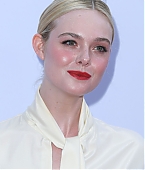
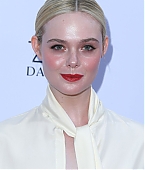
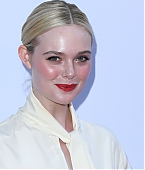





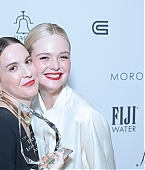

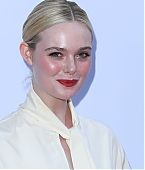

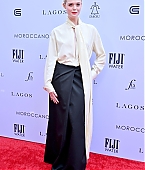
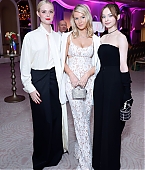
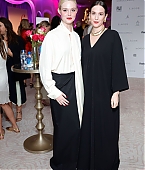
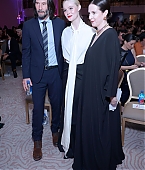

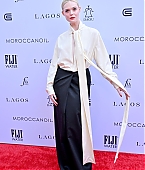

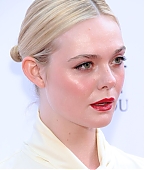
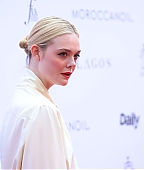
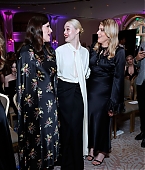
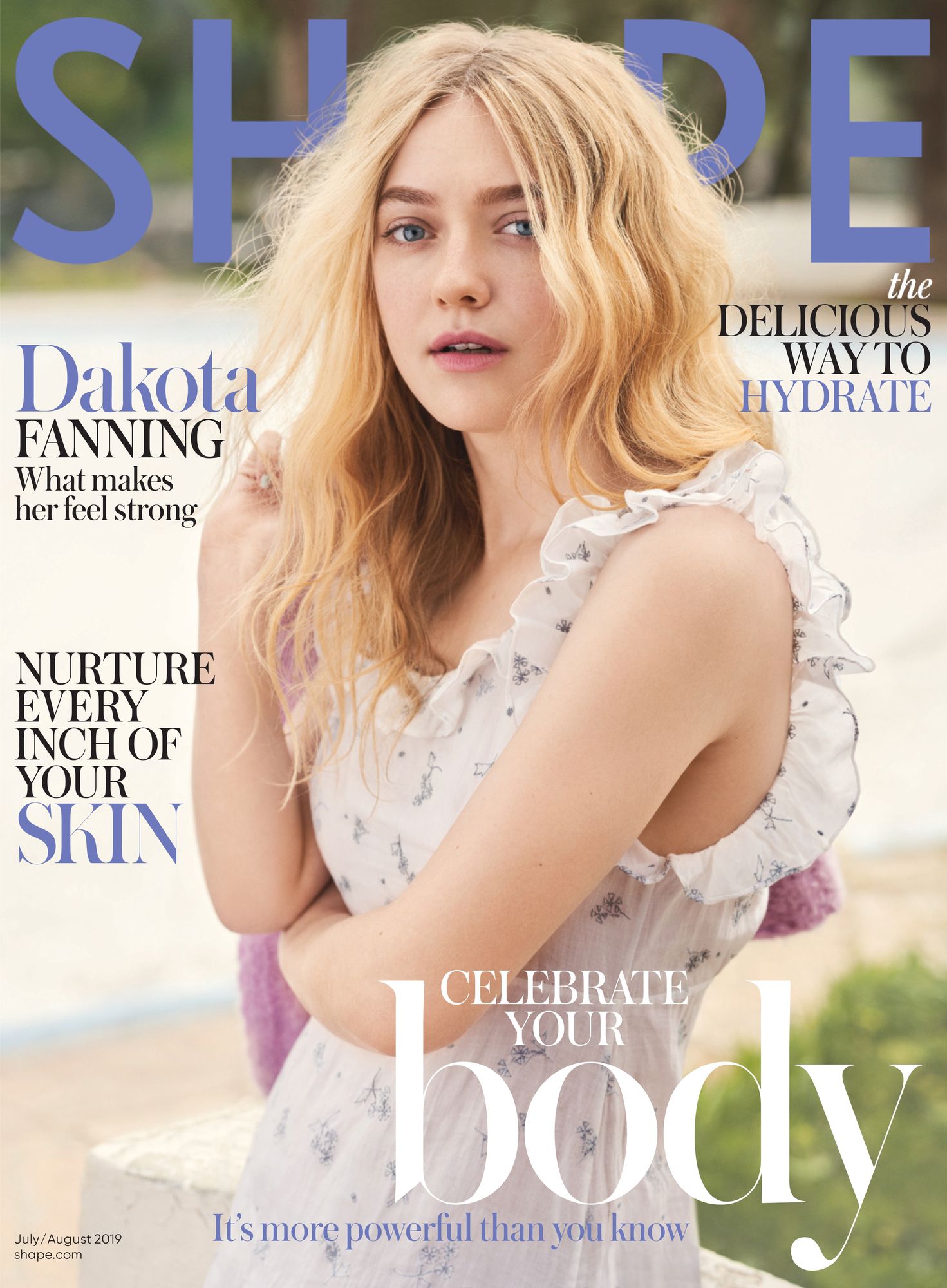

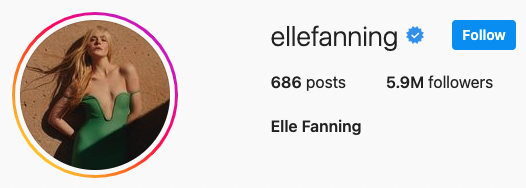

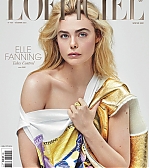

You must be logged in to post a comment.